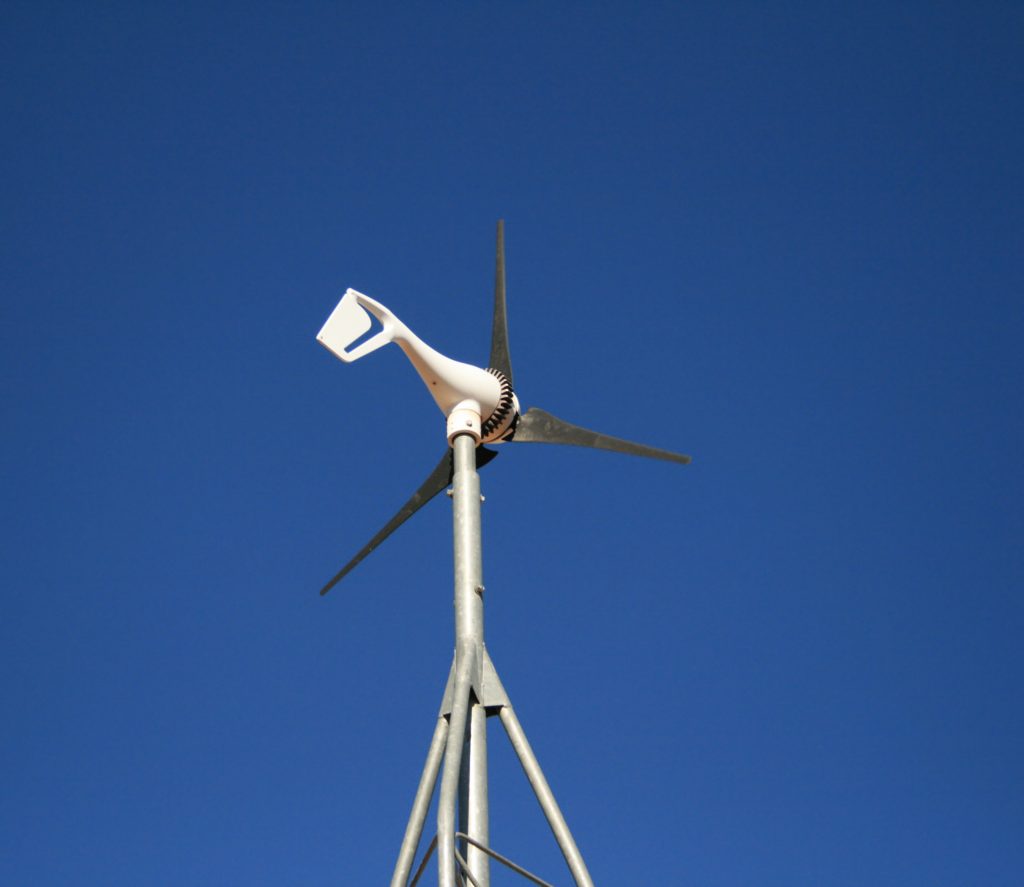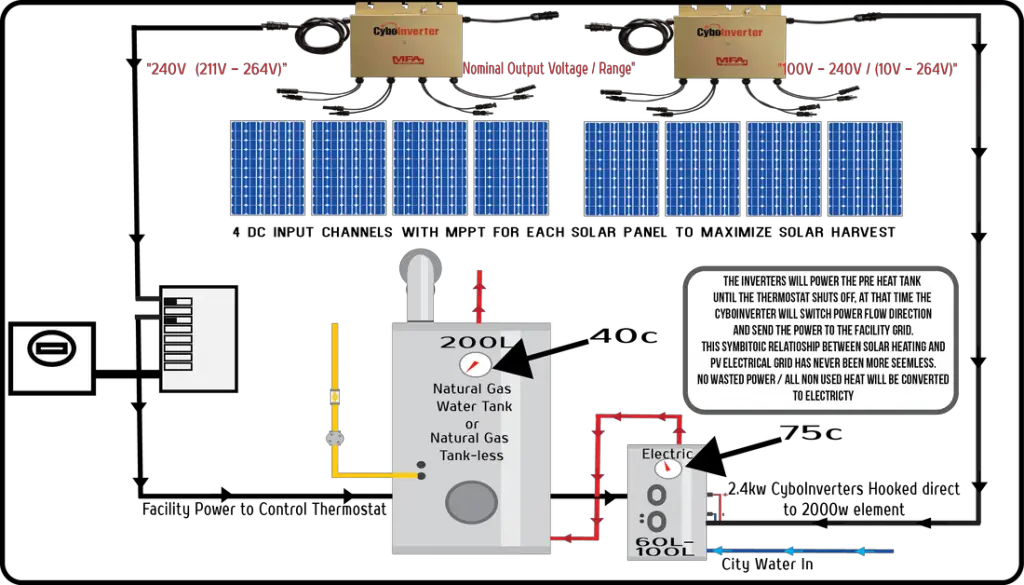DISCOUNT COUPON CODE BELOW: As a member of the BaileyLineRoad.com off-grid energy community that you signed up for recently, this week I want to explain that off-grid energy systems often use a number of electrical components that are unique to the venture. Even if you have experience with conventional household electrical systems, off-grid systems use technology and concepts that are unique. One of these concepts is something called a “dump load”. Here’s how it works in the context of a wind turbine, and why good off-grid systems always have a dump load . . .

When you’re off-grid batteries are full, the charge controller disconnects the current flow coming from the wind turbine to the batteries to prevent overcharging and damage. In a stiff wind, if the electrical load is disconnected and nothing else happens, your windmill will start revolving at very high speed because it’s functioning without a load. This can cause mechanical damage while the turbine is spinning too fast without restrictions, and especially when the charge controller reconnects the windmill to the battery to recharge it again when power has been used from the batteries. Suddenly, the load is applied full force again and it can be a mechanical shock to the wind turbine.
Something called a dump load – managed by a dump load controller – eliminates these hazards. A dump load is a secondary electrical load that takes over when the main battery-charging load isn’t there any more. Dump loads can be created in a couple of ways. One simple but somewhat wasteful choice is a series of large capacity resistors. These take the excess electricity and convert it to heat that wafts off into the surrounding air. This does the job, but you’re also wasting the power you created. There is a better way, and it’s even affecting how solar water heating systems are being designed.
Photovoltaic Water Heating? Yes!
Photovoltaics (PV) is the name for technology that converts sunlight directly into electricity via solar panels. And until recently, PV was used exclusively for just that – making electricity only for use running things made to operate on it. But as the cost of photovoltaic panels declines, some people are beginning to use PV to simplify the solar water heating process, too. That would have been considered crazy a few years ago, but there are two reasons it’s happening now: dropping cost of PV panels, and rising sophistication of inverter technology.
Connect PV panels to a special inverter to convert DC power to variable AC power, then use this inverter to power the heating elements of an electric water heater or baseboard space heater. This is the PV water heating proposition in a nutshell. It side-steps the need for pumps, pipes, heat exchangers and plumbing used as part of conventional solar hot water heating systems, and it is catching on because of simplicity. Probably will catch on in a big way, too. According to Andy McKegney, a 35-year veteran of the solar heating industry, “This is definitely the way solar water heating is going to go.” Click below for a larger, printable version of the schematic diagram.

A handful of inverter technologies exist for using PV power to heat water, but according to my research here something made by a company called CyboInverter is the best by a long shot. Maximum power output of each unit CyboInverter 1200H is 1200 watts, and it has leads for connecting four 300 watt photovoltaic panels to this single unit. Voltage output from the 1200H varies depending on how much sunlight is hitting the panels, maxing out at the 240 volts that electric heating elements are typically made to run on. Variable voltage and phase outputs makes no difference to electric heating elements. Two CyboInverter 1200H units can be connected together to provide 2400 watts of peak power, which is a reasonable amount for water heating. This arrangement can be connected to the bottom element of an electric water heater, with grid connections powering the top element. Another version of the CyboInverter includes a switch that automatically diverts power away from a water heater when it reaches full temperature, directing power to a baseboard heater for space heating. It’s a genius approach, but not the only one.
Direct Current (DC) Water Heating

Another option is to run the excess power through direct current (DC) elements that heat water in a tank-style water heater. That’s what you see above. If you have an electric water heater (just the regular kind), the top element can remain hooked to AC power from the grid (if your system is still grid-tied), while the bottom element can be replaced with this special DC element. Excess power generated by your independent power system warms the water in the tank, reducing the grid power you use. DC water heating is a relatively new approach, but the simplicity of this method is probably the way of the future for off-grid water heating with solar and wind power. This is true whether your power source is a wind turbine or photovoltaic panels. As it turns out, PV panels don’t actually need a dump load to protect the panels them or the battery. When the controller cuts the power coming into the batteries because they’re fully charged, it’s no problem. PV panels can sit in the sun unconnected to anything and not be harmed. That said, no one buys PV panels just to sit there and not generate power. A dump load allows some use to be made of excess power. After all, who doesn’t need hot water sometimes?
Discount Coupon Code
As a member of the BaileyLineRoadLearning.com Off-Grid Energy community, you’re entitled to a $30 discount off the next session of my online course POWER YOUR HOME WITH RENEWABLE ENERGY. Click here to look at the course with no obligation. If you do decide to sign up for the October 2021 session, be sure to use the coupon code BONUS30 to get $30 off at checkout. This is advance notice. The public doesn’t yet know about sign up because I want members of the Off-Grid community to have first chance at a place in the course. Perhaps I’ll see you there.




